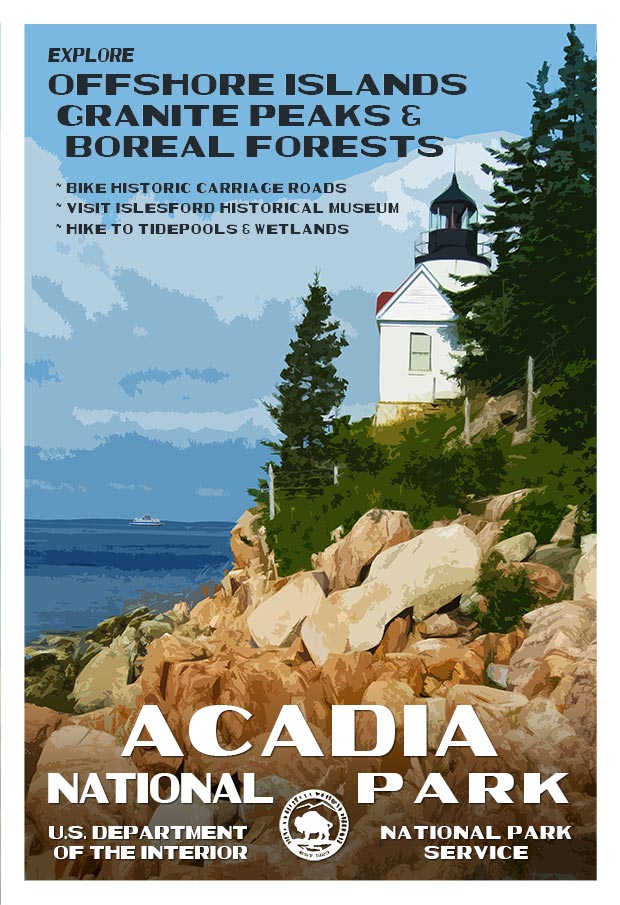
Acadia National Park's Birthday is February 26th!
Robert DeckerThroughout history, people have been drawn to the rugged coast of Maine. Awed by its beauty and diversity, early 20th-century visionaries donated the land that became Acadia National Park, which preserves much of Mount Desert Island, and associated smaller islands off the Atlantic coast.
Landscape architect Charles Eliot is credited with the idea for the park. George B. Dorr, called the "father of Acadia National Park," along with Eliot's father Charles W. Eliot (the president of Harvard), helped the park attain federal status when President Woodrow Wilson established it as Sieur de Monts National Monument on July 8, 1916. On February 26, 1919, it became a national park, with the name Lafayette National Park in honor of the Marquis de Lafayette, an influential French supporter of the American Revolution. The park's name was changed to Acadia National Park on January 19, 1929, in honor of the former French colony of Acadia which once included Maine.
Acadia is the oldest national park east of the Mississippi River and is home to the tallest mountain on the U.S. Atlantic coast. Visitors come to hike granite peaks, bike historic carriage roads, or relax and enjoy the scenery. The park contains more than 120 miles of historic hiking trails, many of which were established by local village improvement societies in the late 1800s and early 1900s. Today many of the historic features, such as stonework, are still visible. The historic carriage road system features 17 stone-faced bridges spanning streams, waterfalls, cliffs, and roadways.

